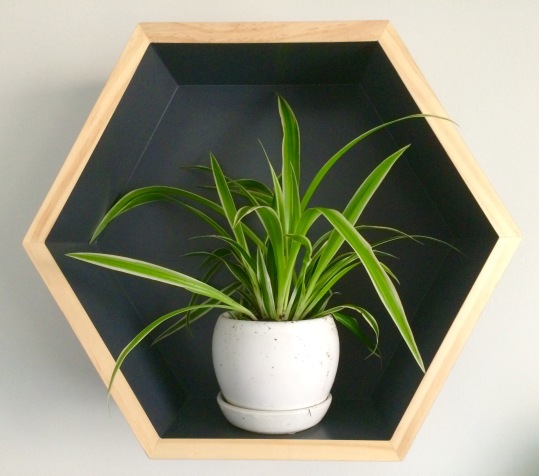I have been researching and researching appropriate indoor plants to help brighten up my room and to combat some of that air pollution that mills around and I’ve finally purchased the one I’ve been looking for!
Introducing, my Spidey!

Isn’t it cute? Hahaha
Here are the reasons why I chose the Spider Plant, or Chlorophytum comosum, to brighten up my space:
- They are tough, low maintenance and hard to kill, which is good because despite wishing I had a green thumb, I’m no gardener. Perfect for indoors, pots and hanging baskets, they don’t take up much room or time!
- NASA uses these tough little beauties to detoxify the air efficiently of formaldehyde!
- Spider plants have also been found to completely detoxifying selenium and arsenic out of the air! How clever??
- Spider plants have been found to detoxify a number of air pollutants out of all sorts of rooms. One study, HERE (LINK), studied their ability to remove particulate matter from the air of the room in offices, factories and houses, and found it removed all types of particulate matter extremely effectively.
- Another incredible study showed that even when spider plants were grown in soil containing lead, it significantly lowered the level found after three months and still thrived!
What tough little plants! If you’re looking for indoor plants, check out this website: http://www.sustainablebabysteps.com/types-of-houseplants.html
I definitely recommend that you source one for yourself, make your home a little brighter and the air you breathe a little cleaner J
Much love, xx
REFERENCES:
Giese, M, Bauer-Doranth, U, Langebartels, Sandermann JR, H 1994 ‘Detoxification of Formaldehyde by the Spider Plant (Chlorophytum comosum L.) and by Soybean (Glycine max L.) Cell-Suspension Cultures’ American Society of Plant Biologists, vol 104, no. 4, pp 1301-1309, viewed 30/6/16, http://www.plantphysiol.org/content/104/4/1301.short
Afton AE, Catron B & Caruso JA 2009, ‘Elucidating the selenium and arsenic metabolic following exposure to the non-hyperaccumulating Chlorophytum comosum, spider plant’ Journal of Experimental Botany, vol. 60, no. 4, pp. 1289-1297, viewed 30/6/16, http://jxb.oxfordjournals.org/content/60/4/1289.short
Gawrońska, H & Bakera, B 2014, ‘Phytoremediation of particulate matter from indoor air by Chlorophytum comosum L, plants’, Air Quality, Atmosphere & Health, vol. 8, no. 3, pp. 265-272, viewed 30/6/16, http://link.springer.com/article/10.1007/s11869-014-0285-4
Wang, Y, Tao, J & Dai, J 2011, ‘Lead tolerance and detoxification mechanism of Chlorophytum comosum’ African Journal of Biotechnology, vol. 10, no. 65, viewed 30/6/16, http://www.ajol.info/index.php/ajb/article/view/97169
